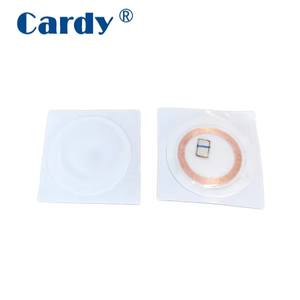
All categories
Featured selections
Trade Assurance
Buyer Central
Help Center
Get the app
Become a supplier

(21128 products available)



























Market Overview: The global market for plate labeling machines is experiencing notable growth, with the market size projected to increase from approximately USD 3.63 billion in 2024 to an estimated USD 5.71 billion by 2030, reflecting a robust CAGR of 7.83% during this period, according to Research and Markets. This surge is mainly driven by the escalating demand for high-speed and precise labeling solutions, particularly within the food and beverage sector, where automation is becoming a standard. As industries increasingly adopt advanced labeling technologies, the need for efficient print and apply labeling systems is on the rise, contributing to the market's expansion. Furthermore, the post-pandemic shift towards e-commerce has intensified the demand for sophisticated labeling machines to ensure accurate product information and compliance with regulatory standards.
Regional Insights: The Asia-Pacific region is anticipated to exhibit the fastest growth in the plate labeling machine market, fueled by a growing urban population and an increasing demand for packaged foods. The region's competitive advantage stems from its access to a cost-effective labor pool and the rising consumption of fast-moving consumer goods (FMCG). Moreover, regulatory frameworks in countries like China mandate clear labeling practices for imported foods, further driving the demand for advanced labeling solutions. Additionally, the introduction of new manufacturing facilities, such as QLM's recent investment in Vietnam, highlights the region's strategic focus on enhancing production capabilities to meet diverse market needs. As consumer awareness regarding product labeling rises, manufacturers are urged to invest in innovative labeling technologies to maintain their competitive edge in this dynamic environment, according to multiple industry reports.
The labeling machine for plates is designed to ensure precise labeling on plates and similar products. There are two main types of plate-labeling machines:
Automatic plate labeling machines
The main characteristic of automatic labeling machines is the fully automated process. These machines often feature advanced specifications like product-sensing capabilities. They can adapt to label different shapes and sizes without needing to change any parts. These machines also have multiple label applications, meaning they can apply various label types. Furthermore, they are compatible with different kinds of label materials and can also be used in conjunction with printing technologies. With a great deal of controllability and customizability, automatic plate labeling machines are not only highly precise and efficient in applying labels but also have advanced characteristics such as product-sensing ability and multiple label application modes, making them suitable for large-scale production lines.
Semi-automatic plate labeling machines
Semi-automatic plate labeling machines require manual product feeding. However, they still provide an efficient and accurate labeling process. They are often less expensive than fully automatic labeling machines, which makes them a practical option for small to medium-sized enterprises. With the aid of an operator, the labeled products can be fed into the machine. The machine applies labels in an efficient and precise manner, which still requires a bit of assistance from the operator. Because production volume might not be high enough to warrant the expense of fully automatic machines, semi-automatic machines are often more affordable solutions that offer efficiency and accuracy in labeling.
The food plate labeling machine is widely used in various industries due to its many uses.
Food packaging industry:
Third-party food labeling machines are primarily applied in the food packaging industry. They efficiently apply labels to various food products' packaging, such as jars, bottles, boxes, and cartons. Labels may include ingredient information, nutritional facts, barcodes, and labeling requirements. The use of plate labeling machines helps ensure labeling compliance, enhances product traceability, and improves consumer awareness.
Logistics and packaging industry:
In the packaging and logistics industry, plate labeling machines are used to label packages, boxes, and containers. The labels provide important information such as addresses, tracking numbers, barcodes, and handling instructions. This improves the efficiency of package identification and tracking, and facilitates the organization and management of logistics.
Cosmetics and personal care product industry:
In the cosmetics and personal care product industry, plate labeling machines are used to label product containers such as bottles, jars, and boxes. The labels include brand names, product names, ingredients, usage methods, and other information. The plate labeling machines ensure that the labeling is accurate and beautiful, which helps enhance the brand image and consumer confidence.
Pharmaceuticals industry:
Labeling machines for plates are commonly used in the pharmaceuticals industry. They apply labels to medicine bottles, boxes, and containers, indicating important information such as drug names, specifications, usage, and precautionary measures. Accurate labeling is essential for compliance with regulations, patient safety, and effective medication management.
Industrial manufacturing industry:
In the industrial manufacturing sector, plate labeling machines are used to label products, components, and parts. These can include nameplates, specifications, barcodes, and other identification labels. The labeling machines enhance traceability, quality control, and inventory management in the manufacturing process.
Retail labeling industry:
Plate labeling machines find application in the retail industry for labeling products and shelves. They print and stick labels like price tags, product descriptions, promotional labels, etc. This improves product management and inventory control and helps enhance the shopping experience for customers.
Automotive and parts industry:
Plate labeling machines are widely applied in the automotive and parts industry for labeling automotive parts, accessories, and packaging. The labels can include part numbers, specifications, barcodes, and other identification information. This enhances traceability, quality control, and inventory management in automotive manufacturing and supply chains.
When investing in a machine that can label plates, one must conduct extensive research on the options available. Focus on the features that may affect efficiency and production and the quality of the product. Once the supply chain has been established, negotiate for bulk-buy discounts to get the most value for the investment.
Choose a machine that can use any kind of label material. The machine should be able to work with everything, including stickers, price tags, and barcode labels. To ensure uniformity and cost-effectiveness, select machines that can use label materials that are commonly used in the industry. Investigate how challenging it will be to obtain labeling material that is compatible with the machine being purchased.
When selecting the plate labeling machine, consider the number of labels it can apply in an hour. Companies looking to enhance their productivity and efficiency may want to choose machines that can apply up to 600 labels in an hour. The labeler's speed should equal the product's feeding speed to ensure a seamless labeling process.
Consider the machine's maximum size and weight capacity when selecting a plate labeling machine for use in a manufacturing facility with various types of machinery. Consider the size and weight of the plates that need to be labeled. Ensure that the labeler can handle the dimensions and weight of the plates to be labeled. Check the dimensions to see if the machine can be integrated into the existing setup without causing any disruption to the process flow within the facility.
Supply chain buyers should get samples to assess their quality and suitability for the intended application. Evaluate the machine's labeling accuracy, alignment, adhesion strength, and overall labeling quality. Check for any additional features such as label counting, automatic label resetting, or error detection that may enhance the machine's functionality.
In a busy commercial space, it is important to consider the machine's ease of use as staff turnover could impact efficiency. Choose a labeling machine with straightforward operation, intuitive controls, and clear instructions. Look for machines with adjustable labeling speeds to accommodate different staff members' skill levels.
Buyers should note that different machines can do other jobs. Distinguishing between the varieties can assist buyers in making more informed decisions. Floor-standing labelers are perfect for large-scale labeling operations and provide high-speed labeling. Handheld labelers are suitable for small-scale labeling. Benchtop labelers are ideal for moderate-scale labeling operations where products need to be labeled at a workstation. If in doubt, consult an industry expert who can guide a buyer in making the right choice.
Q1: What is the difference between a plate labeler and one that works on bottles?
A1: Plates are flat surfaces that can be of different shapes to warrant different labeling techniques. Unlike the cylindrical model of the bottle, flat surfaces may require labeling machines that can tilt, rotate, or slide the object so the label can be affixed on its surface.
Q2: Can a plate labeling machine be used to label other flat products like trays, tubs, and pans?
A2: Yes, most labeling machines can be used to label other flat products like trays, tubs, and pans. However, the suitability of the machine will depend on the shape of the product and the type of label required.
Q3: How fast can a plate labeling machine work?
A3: The speed of plate labeling machines varies depending on the type of machine, the size of the label, and the complexity of the labeling task. As a general guideline, for simple labeling tasks like applying stickers or adhesive labels, plate labeling machines can label several plates per minute.
Q4: Is it possible for a plate labeling machine to handle multiple label formats?
A4: Yes, many labeling machines can handle multiple label formats, including die-cut labels, inline labels, and continuous labels. These machines typically have adjustable settings or interchangeable labeling heads to accommodate different label formats.